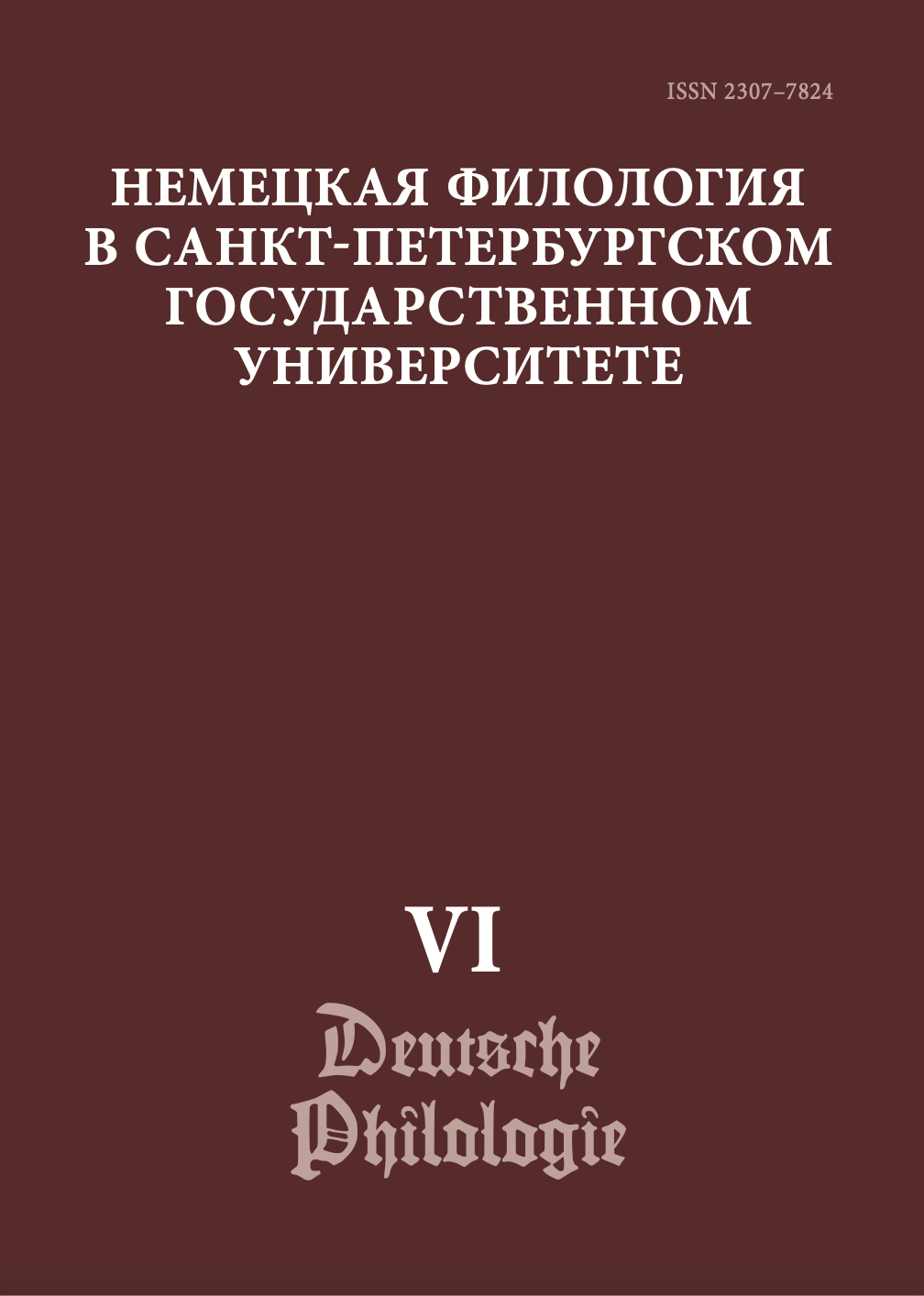SIMILES INCLUDING TEMPORAL NOUNS IN THE MIDDLE HIGH GERMAN COURTLY EPIC
Abstract
The paper deals with similes including temporal nouns in Middle High German courtly epics “Parzival” and “The Lay of the Nibelungs”. The ground, topic and vehicle of such similes, as well as their structure and syntactical role are considered. The most popular ground of similes with temporal nouns is the ‘presence/absence of light or shining’, while the most popular vehicle is the noun tac “day”. The ‘shining’ as a simile ground is typical not only for MHG courtly literature, but is also common for other Indo-European literatures, e. g. Ancient Greek or Indian. The usage of temporal nouns in similes allows to enable a vivid and not trite in the MHG period vehicle.
Keywords:
Middle High German, simile, temporal nouns, “Parzival”, “The Lay of the Nibelungs”
Downloads
References
Литературa
References
Downloads
Published
How to Cite
Issue
Section
License
Условия передачи авторских прав на статьи и рецензии, опубликованные в ежегодном периодическом издании «Немецкая филология» регулируются условиями Лицензионного Договора автора с Санкт-Петербургским государственным университетом. В соответствии с Лицензионным Договором опубликованные материалы находятся в открытом доступе, а авторам бесплатно предоставляется неограниченные возможности их распространения и самостоятельного архивирования.




